
Accessibility Program
To fulfill the mission of the Judicial Branch, all individuals, including those with functional diversity, must have equal and full access to the courts. To such ends, the Judicial Branch always strives to offer services that respect the dignity and independence of this population. The Judicial Branch Accessibility Program was created pursuant to this institutional policy.
Rights of Individuals with Functional Diversity
The Accessibility Program seeks to facilitate compliance by the courts and Judicial Branch divisions with federal and local laws concerning the rights of individuals with functional diversity. It also coordinates the necessary reasonable accommodations to guarantee adequate access to justice.
What is Functional Diversity?
The term «functional diversity» is an alternative expression intended to replace other concepts that are no longer in use because they are considered offensive. This term proposes a positive view of disability by recognizing different abilities rather than a person’s deficiencies, limitations, or restrictions. This can be viewed as a spectrum or an umbrella term that includes, for example, intellectual disabilities and developmental deficiencies.
What Types of Reasonable Accommodations Do the Courts Provide?
A reasonable accommodation is an adjustment to the Judicial Branch’s policies, practices, and procedures. The type of reasonable accommodation will depend on the person’s needs, the proceedings being held, and the availability of different types of services and equipment. This includes:
- In-court Sign Language Interpreters
- Virtual Remote Interpreting (VRI)
- Assistive Technology Equipment
Reasonable accommodation may be requested through motion or orally to the judge hearing the case. They may also be requested to a court marshal, at the Office of the Clerk of the Court, or to any other court support staff who is assisting you.
How Does the Accessibility Program Help?
The duties of the Accessibility Program include:
- assisting and advising the Office of the Executive Director in the process of receiving and processing requests for reasonable accommodations and for the assignment of sign language interpreters
- recommending the purchase of auxiliary equipment and services, such as assistive technology, in order to improve the effective communication of people with hearing loss, as well as any other devices that allows people with functional diversity to participate in court proceedings
- conducting periodic accessibility assessments of the Judicial Branch’s website, in collaboration with the Judicial Branch Communications Office, and developing a joint work plan to eliminate accessibility barriers in the different electronic platforms
- collaborating with different Judicial Branch dependencies to identify staff training needs on accessibility issues
What Assistive Technology Does the Judicial Branch Offer?
Assistive technology devices are items, products, or systems that can be used to increase, maintain, or improve the functional capabilities of a person with functional diversity. The most frequently used devices in the Judicial Branch to effectively communicate with people who have difficulty speaking or hearing or who have vision impairments include:
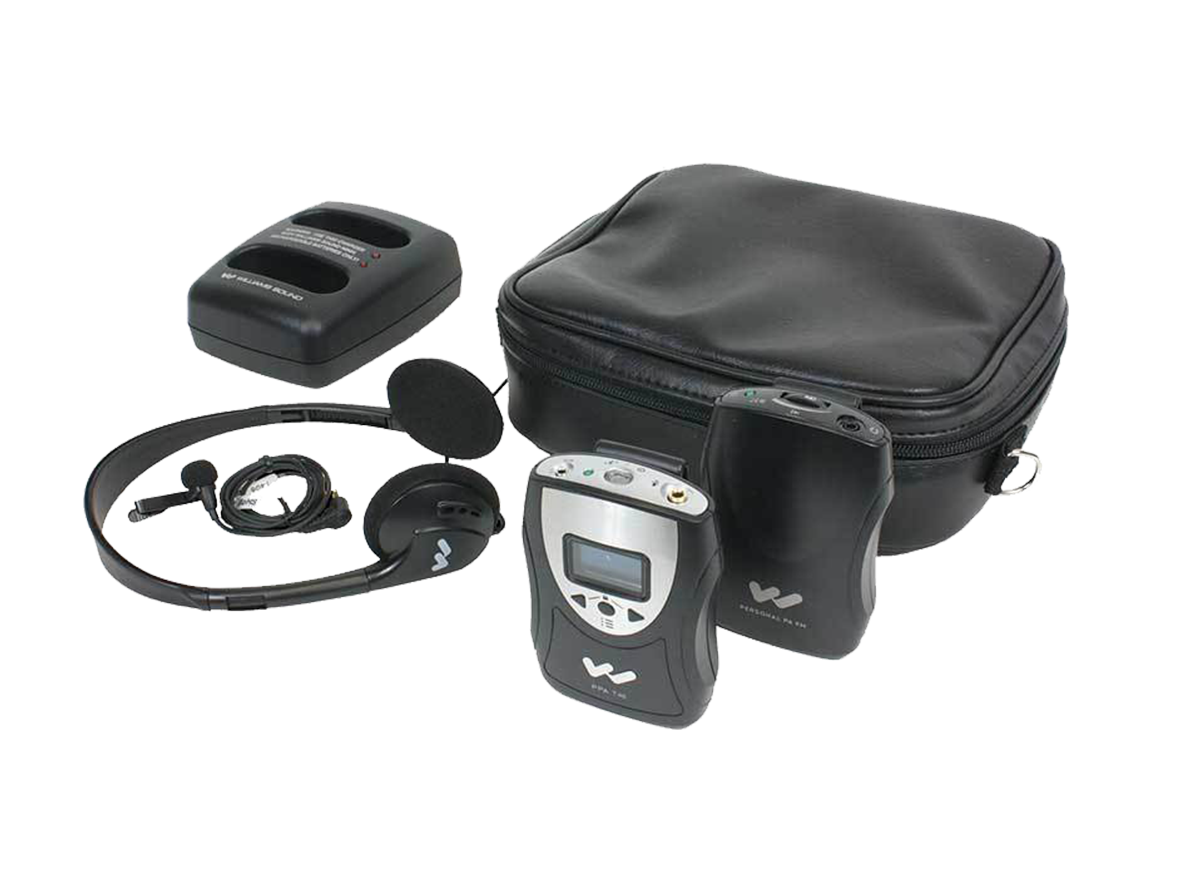
Personal Amplifier (Pocketalker):
This device amplifies nearby sounds. This device is practical, functional, and easy to use for face-to-face conversations and to pick up nearby speech or sounds. However, if the source of the sound is not close, a frequency-modulated (FM) amplifier may be more effective.
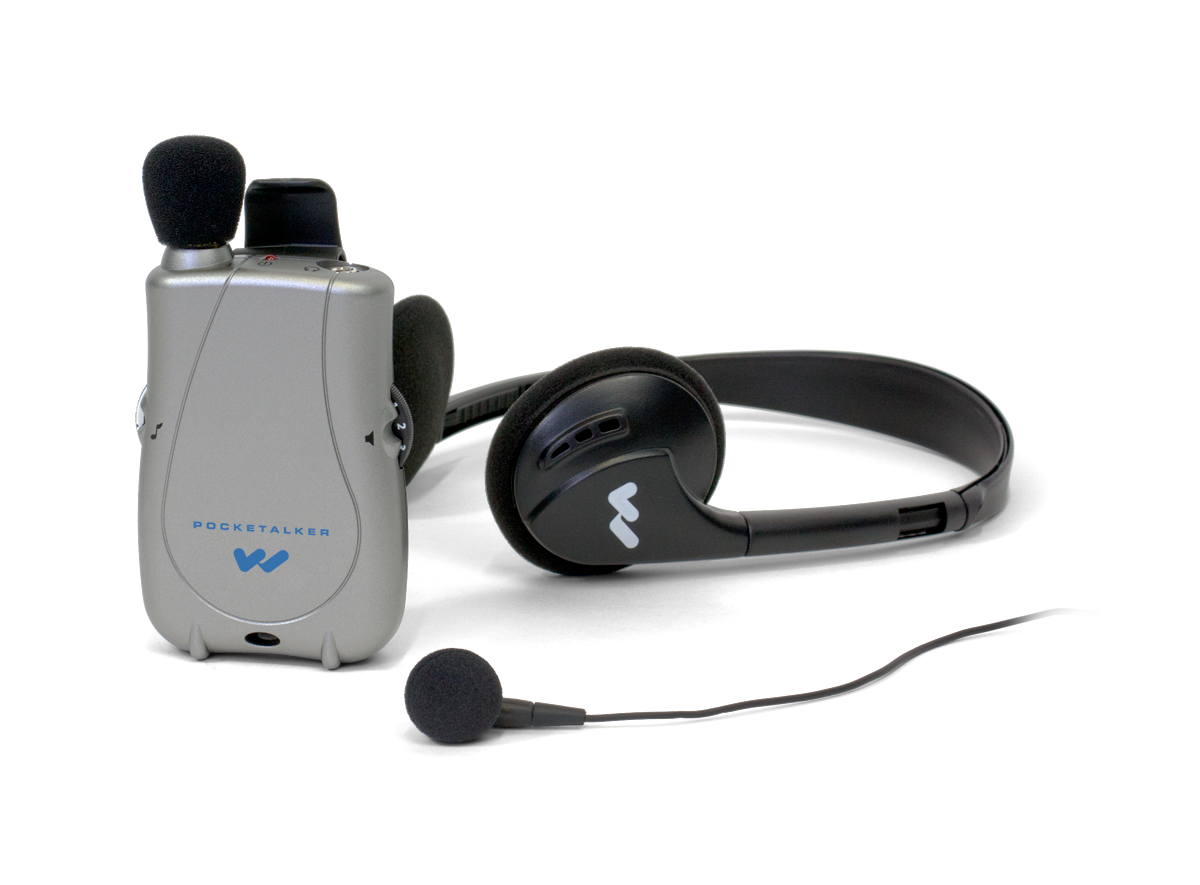
FM Sound Amplifier
This device amplifies sound from a distance. FM systems are suitable for large spaces or courtrooms, as they help capture and relay distant sounds directly to individuals who have hearing loss without any environmental distortion.
An FM sound amplifier has two components: a transmitter, which is attached to a microphone, and a receiver attached to a headset. The transmitter can capture sound in two ways: through a microphone placed on the speaker’s collar or through an auxiliary port when used with the connecting cables to other sound sources, such as the For The Record system. The FM audio amplifier receiver is placed on the person with hearing loss.
It is important to verify that both the transmitter and the receiver are on the same channel. If there is no sound when the device is turned on or if the sound is distorted, you can twist the couplings to boost the connection, as they are sometimes affected by humidity, especially if the device has been offline for a long period of time. If there is sound but it is distorted or there is interference, ask the technician to change the transmission channel to another channel with better signal.
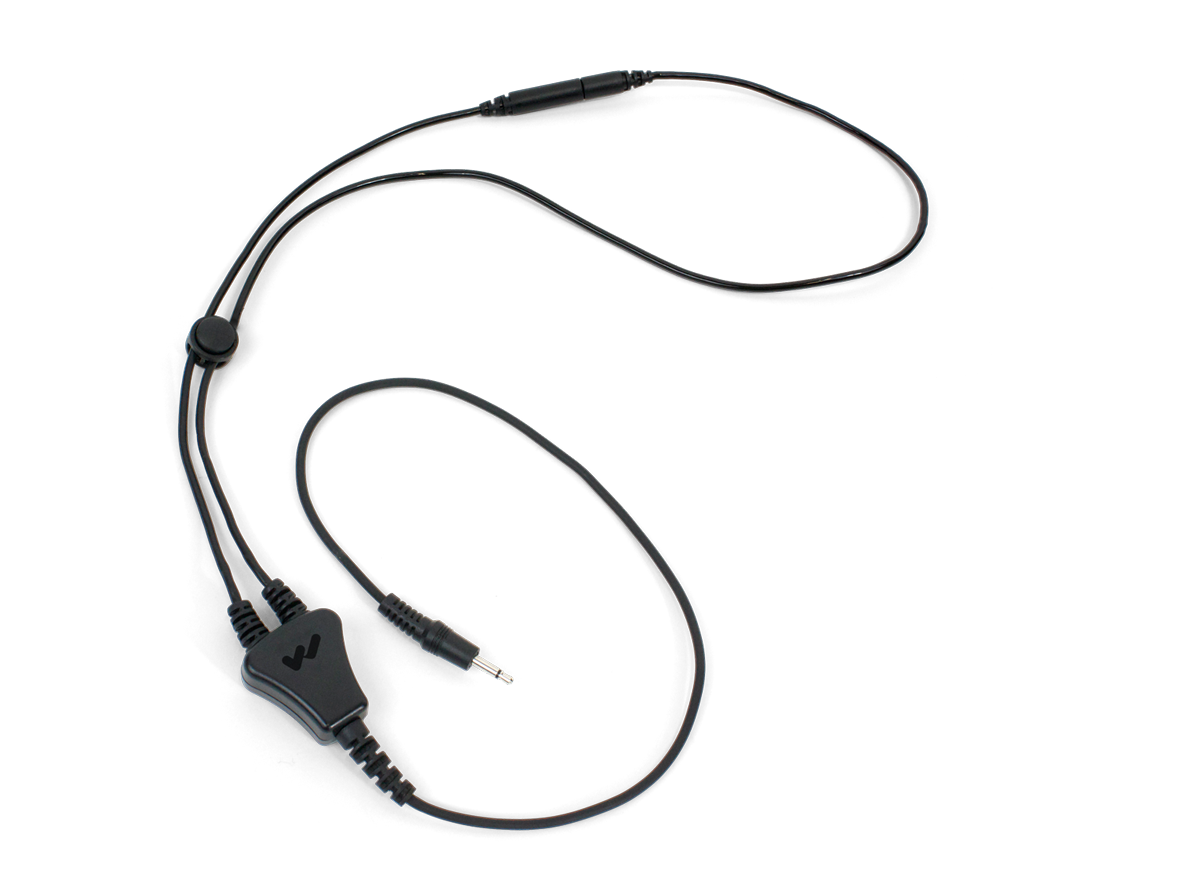 Induction Neckloop
Induction Neckloop
Typical headphones are usually used with this device, but a neckloop may be worn around the neck of a person who has T-coil compatible hearing aids. This is a type of electromagnetic transmission available in some headphones.
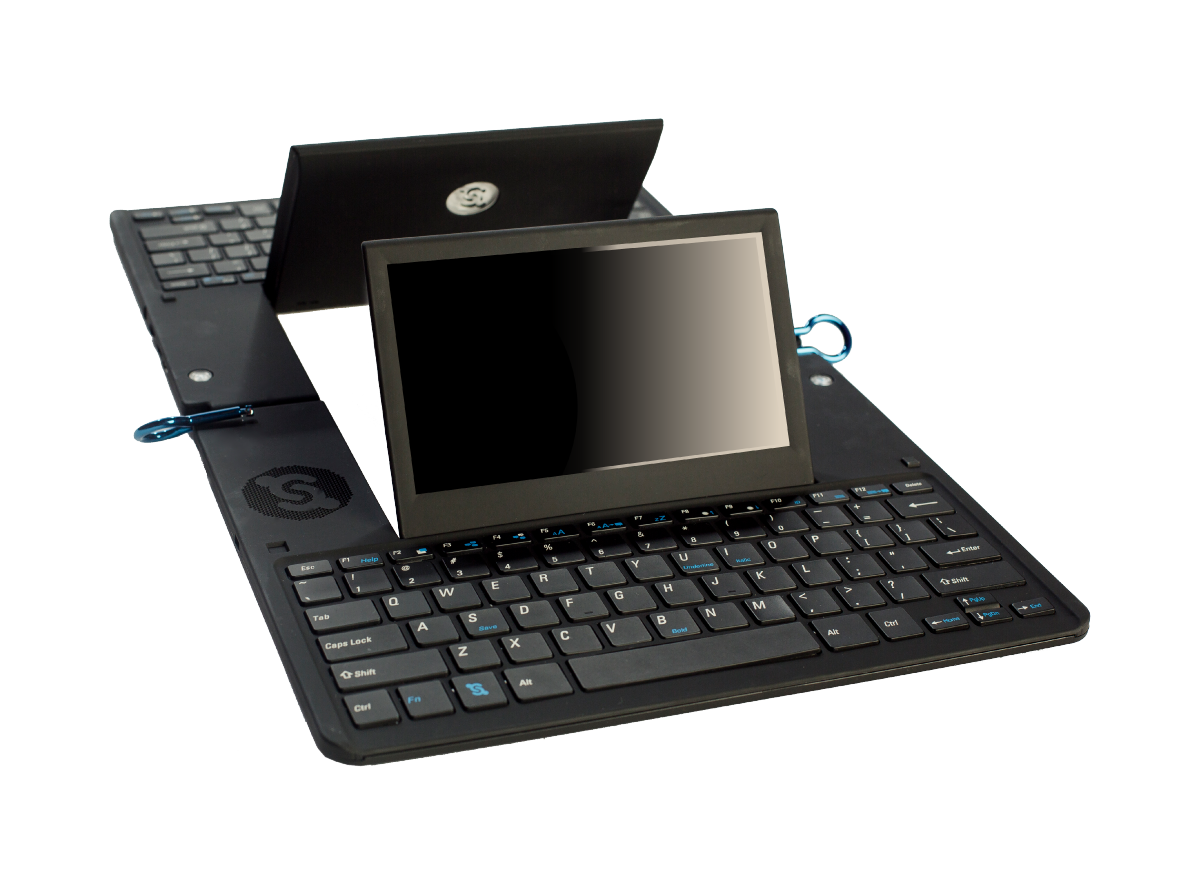
Ubi Duo Device
This device allows individuals with communication challenges to communicate with anyone through written text. In particular, this device facilitates more effective communication with or between persons who are deaf and are able to read and write.
Ubi Duo has easy-to-use functions that make face-to-face communication quick and easy.
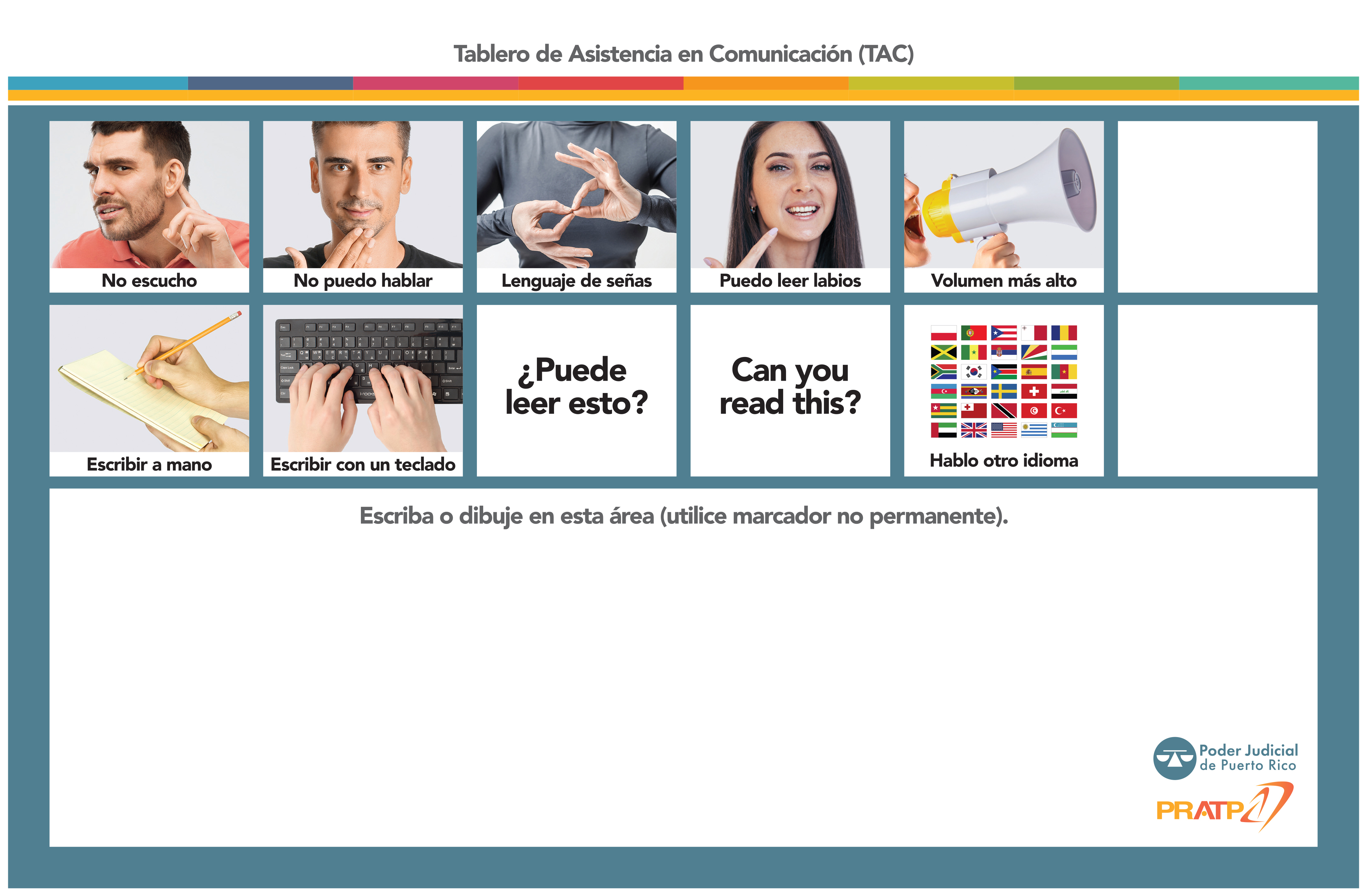
Communication Assistance Board
The Communication Assistance Board was developed by the Judicial Branch of Puerto Rico and the Puerto Rico Assistive Technology Program (PRATP) to help staff quickly identify the operative communication tool that a person with difficulty communicating may require.
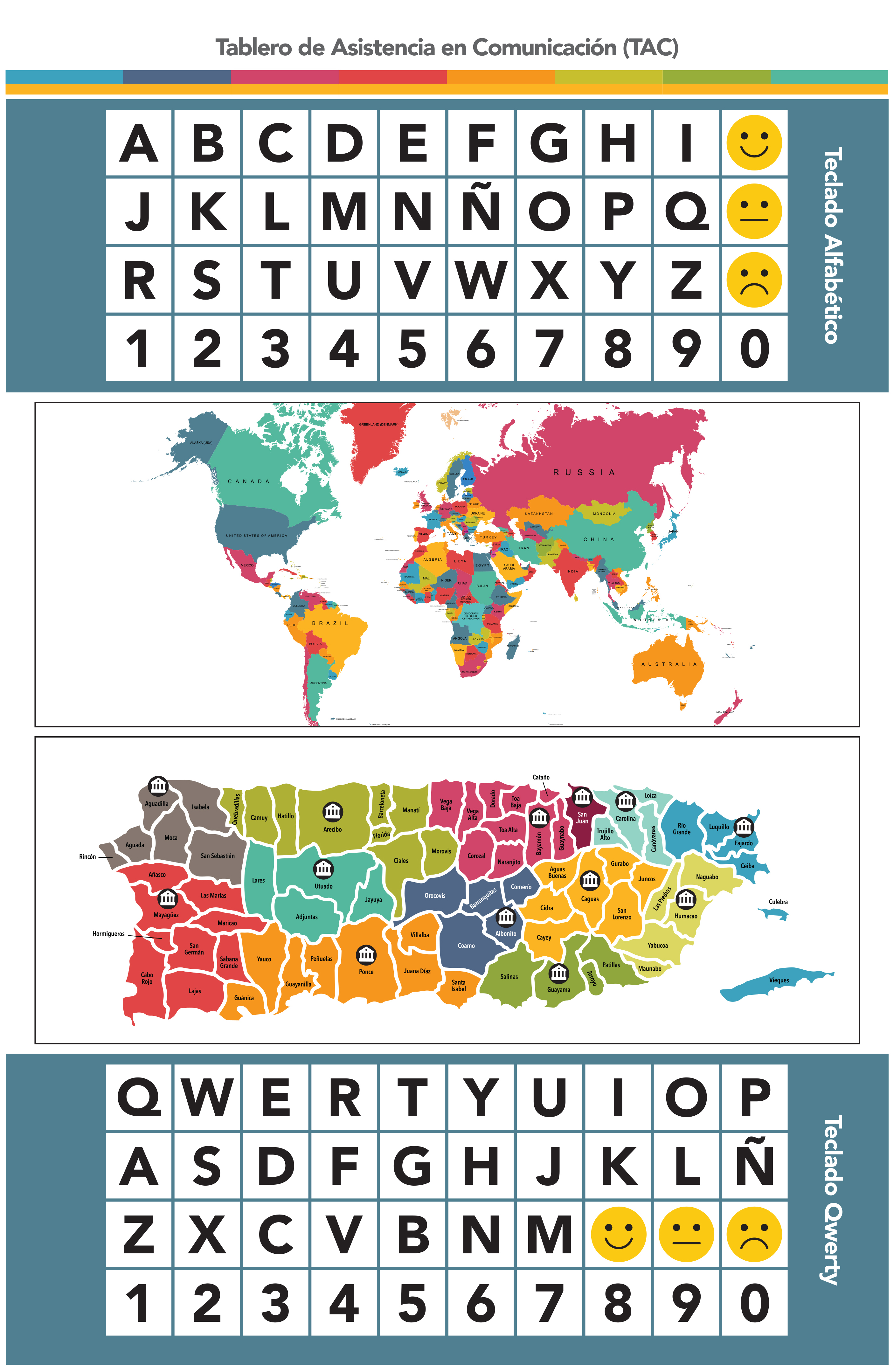
Resources of Interest
Centro Pro Vida Independiente (CEPVI)
(787) 848-5240
http://cepvi.org/
Institute on Developmental Disabilities, University of Puerto Rico, Medical Sciences Campus
(787) 758-2525, extensions 1539 and 2401
https://iddpr.rcm.upr.edu/
Movimiento para el Alcance de una Vida Independiente
(787) 758-7901
http://mavi-pr.org/
Puerto Rico Assistive Technology Program (PRATP), University of Puerto Rico, Medical Sciences Campus
(787) 474-9999
https://www.pratp.upr.edu/
For More Information
For information on the Accessibility Program or to send feedback regarding the provision of services to persons with functional diversity, you may contact the Office of Court Administration Directorate of Administration by calling (787) 641-6600, extension 5706 or by sending an email to Program Coordinator, Liani Cabán Reyes, at liani.caban@poderjudicial.pr.

